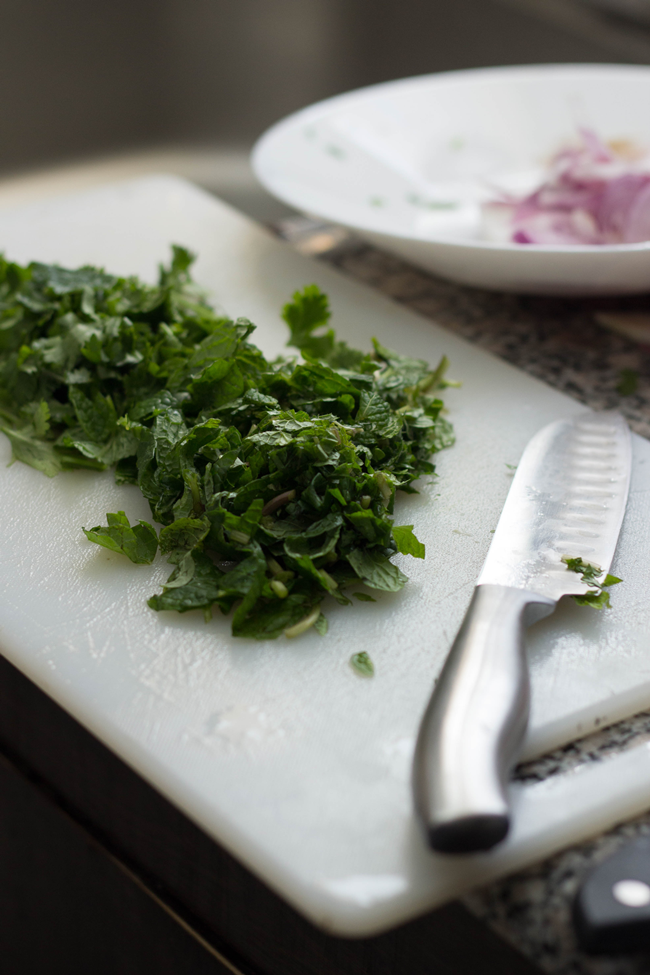Almost every month since November last year, our Indian housemate Jithin has been making a special dish from their district in India, the
Thalassery chicken biryani.
A
biryani is a rice-based dish from South Asia with chicken and lots of spices.
Thalassery is a city in Kannur District in the state of
Kerela, India. There are a number of variety of biryani and the Thalassery biryani is the only one from Kerela, and its main difference from the other is its use of the
Jeerakasala rice.
Rice Culture
Growing up in the Philippines, I couldn't even keep up with the variety of rice we have --
sinandomeng,
milagrosa,
jasmine,
dinorado, NFA(!) -- and then coming here opened up a whole lot more choices from the long and slender
basmati rice to the roundish and short Egyptian rice.
The last time Jithin cooked for us, it was planned thus he was able to buy and use jeerakasala rice. They are small, like about half the size of jasmine rice that we Pinoys are familiar with. But the only rice available when he decided to cook this time was jasmine so he was left with no other option.
No Recipe Here
I tried to make him narrate, give the details of the ingredients and the procedure but he lost me so I gave up. Hehe. After all, the ingredients weren't really complete but enough to at least be able to call it
biryani... and he is from Thalassery so that would do.
 |
| Chopped mint leaves. |
I wanted to be specific, exactly how he did it, but like many
independent-cook-anything-from-anything-expats, we are after the taste and the output, not the exact measurements.
General Procedure
Basically there are three (or four, if the raita is to be included) parts in preparing the Thalassery Biryani: cooking the rice, the chicken masala, and layering the rice over the chicken masala. No wonder why he said it is usually only done during special occasions.
Cooking in Pictures
Here are the photos instead of a full recipe. It always feels so good to take photos of food.
Fried Onion
 |
| He used around four whole onions. |
Cooked Rice
When I first saw the cooked rice, I immediately thought they looked different from his last biryani. He used jasmine instead of the jeerakasala rice. Note that it is not as simple as boiling it in plain water but has to be boiled with oil, garam masala, and a little yogurt.
 |
| He used jasmine instead of the jeerakasala rice. |
Chicken Masala
Instead of using fresh spices, he used garam masala, a powder mix of spices for making masala.
First to go is the chopped tomatoes, then the ginger and garlic paste, then the garam masala powder (essentially all the spices).
 |
| Pouring garam masala over the chopped tomatoes. |
 |
| The chicken and other spices, the mint leaves and cilantro are mixed together. |
 |
| Adding half of the fried onion to the chicken masala. |
Raita
Raita is basically the Indian counterpart of our dip (in Filipino,
sarsa or
sawsawan). It is made with yogurt, vegetables (cucumber) and other spices (cilantro and pepper). Though they actually refer to this as a salad already. It does look well like a salad.
This can be prepared while waiting for the chicken to cook.
 |
| Pouring yogurt over sliced cucumber |
Back to the chicken masala
Adding the rice
Once the chicken masala is cooked, the rice can now be added.
Once the rice has been transferred on top of the masala, the onions were added and a few teaspoons of ghee.
After that, the pot is covered.
No mixing should be done once the rice is added and should be cooked at very low heat for at least 15 minutes. And since the masala at the bottom has had been cooked, cooking the biryani on a stove and in a thin pot usually results in partially burned masala.
Almost ready
After that the onion's taste would have mixed with the biryani, the ghee melted, the rice can now be mixed together with masala.
 |
| Some of the masala charred by the time the biryani is cooked. due to the prolonged cooking. |
Ready to be served!
Chicken biryani, probably like its middle eastern 'cousin', isn't for everyone. Its taste and aroma has to be acquired for your to appreciate it.


























